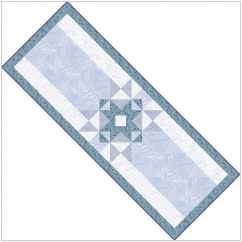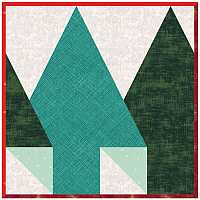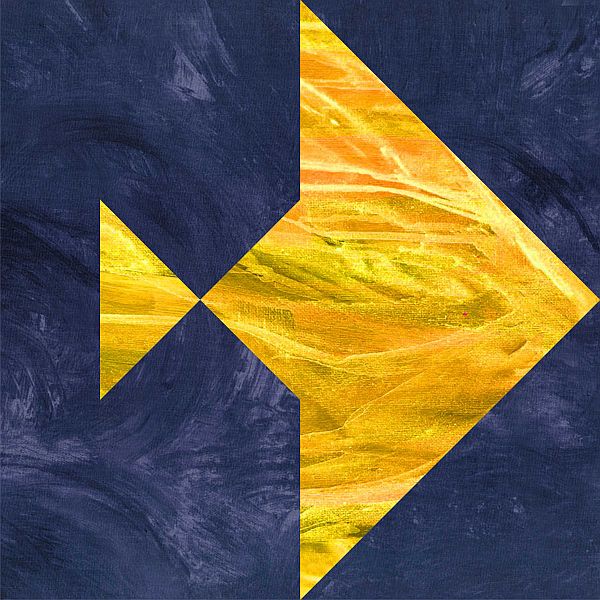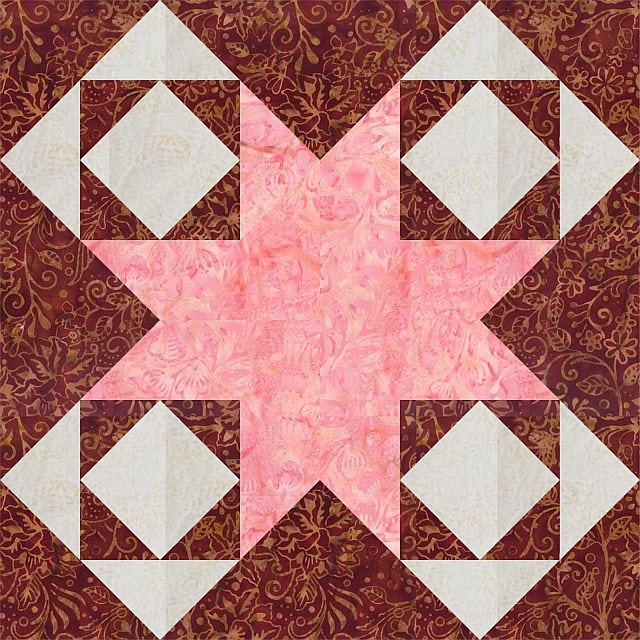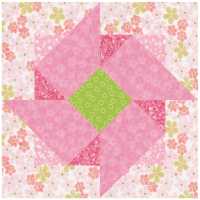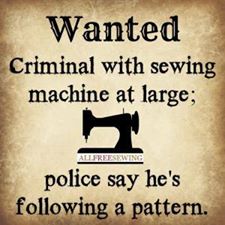Tag Sale! 2022 Super Sunday Mystery Quilt
Note: This post may contain affiliate links. That means we may earn a commission at no additional cost to you if you purchase via our links. Not all links are affiliate links. I only recommend products I use and trust. As an Amazon Associate, I earn from qualifying purchases.
Traditionally, I hold a mystery quilt event every Super Sunday that is fast, easy, and FUN for busy quilters. This year, we are concentrating on using up your STASH. The pattern is written for 10″ squares but this quilt is so scrappy, you could probably substitute anything you have. This quilt will finish about 60″ x 72″, but you can make it larger or smaller quite easily.
Tag Sale Quilt Pattern
Not sure what to do with that gorgeous layer cake selection of fabrics? Here is a great pattern for using those 10″ squares—and any scraps you may happen to have. You can substitute Fat Quarters if you don’t have any 10″ squares. If you are substituting, DO NOT precut. I will give you Fat Quarter instructions.
If you are making a planned scrappy or a themed quilt, make all the darks your chosen color or theme. They don’t actually have to be dark fabric. Just use them wherever the pattern calls for “dark”.
Generally, before starting this or any other project, you would wash and press your fabric. This is difficult with precuts, so it is up to you. If you like the behavior of crisp fabric as you cut, sew and press your project, try a little spray sizing when you press it.
I am showing the graphics in grayscale so it doesn’t distract you, but you can assume all the light gray colors are a light color; the medium gray squares are a medium color and the dark gray squares are a dark color.
Take the time to clean your machine, put in a new needle, and fill a few bobbins. When pressing, just hold the iron over a spot for a moment or two. This pattern assumes a perfect 1/4” seam.
Fabric Requirements:
At least (67) 10″ squares, (26) light; (18) medium; and (23) dark.
OR
(6 ) dark Fat Quarters or equivalent and
(5) medium Fat Quarters or equivalent and
(7 ) light Fat Quarters or equivalent.
PLUS
2/3 yds Inner Border
1-1/2 yds Outer Border
2/3 yd Binding
Things you will find helpful: (not required)
A 3-1/2″ and a 6-1/2″ Square Ruler
Sharp Pins
A design wall, bed, or an area on the floor to layout your blocks.
Cutting Instructions
These instructions are written for 10″ squares. If you are working from fat quarters, yardage, or scraps, cut for the final size, not the 10″ square size.
- From (15) 10″ dark squares, cut (15) 6-1/2″ squares. Save the remainder of the square in case you can use it later on in this very scrappy pattern.
- From (8) 10″ dark squares, cut (8) 8″ squares.
- From (8) 10″ medium squares, cut (8) 8″ squares.
- From (10) 10″ medium squares, cut (32) 3-1/2″ squares.
- From (16) 10″ light squares, cut (16) 8″ squares.
- From (10) 10″ light squares, cut (32) 3-1/2″ squares
- Outer Border: Cut (7) strips 6-1/2″ wide by the Width of Fabric
- Inner Border: Cut (6) strips 3-1/2″ wide by the Width of Fabric
- Binding: Cut (8) strips 2-1/2″ wide by the Width of Fabric
Making the Half-Square-Triangle Quilt Blocks
In this clue, you are going to use the Magic 8 Method to make Half-Square-Triangle Quilt Blocks.
The trick to this method is to sew more than one HST at a time. Like any magic trick, it needs a little bit of prep work. First, you need to cut two oversized squares for the dark side and the light side of your HST block. To determine the size of the square you will need, you double the size of the finished square and add 1-3/4″. For example, if you want to end up with 3″ finished HSTs, you would start with a 7-3/4″ square. (3 times 2 is 6, plus 1-3/4.)
Remember the 8″ blocks that I had you cut? Go get them now. You will need:
- (8) 8″ medium squares.
- (8) 8″ dark squares.
- (16) 8″ light squares.
In the example below, I am using 8″ squares. That’s to give you a little bit of room to square up your blocks afterward. If you are very confident of your seam allowance, trim these squares to 7-3/4″ square. (Maybe make a test block first.)
Start with:
- (8) 8″ light squares
- (8) 8″ dark squares
Fold your light squares in quarters and press.
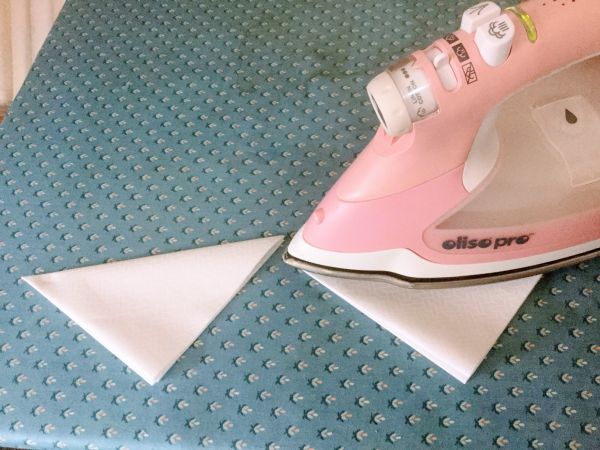
You can see my Oliso Smart Iron in the picture above. I love the fact that it raises and lowers automatically. Just touch the iron handle and it lowers, ready to press. Take your hand off and it lifts off the board. And yes, you can turn off that feature on the back of the iron.
But I like not lifting that heavy and HOT iron up on its heel and worrying about tipping. It’s expensive, but it is worth it for the self-lifting feature alone.

On the back of the light squares, draw 4 lines: one vertically through the center; one horizontally through the center, and one on both diagonals. Use the pressing lines as your guides.
Put your light square and your dark square right sides together. Sew 1/4″ on both sides of the diagonal lines. Since you are making 8 squares, you will probably find it easier to chain stitch these.
Just sew all the centers first, going from one block to the next without snipping the thread in between the blocks. When that is done, you can do the other side.
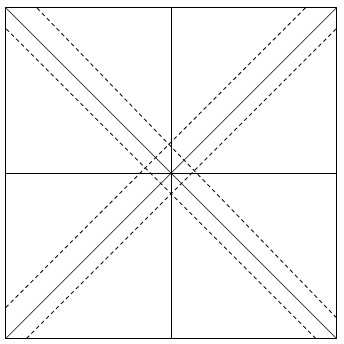
Then cut it apart along the drawn lines.
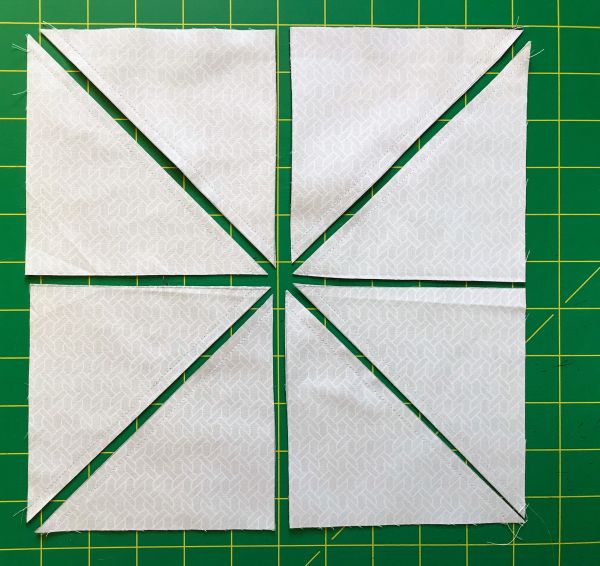
When you have all 64 blocks cut, you will need to square them up. If you have a specialty ruler like the Triangle Square Up Ruler by Quilt in a Day that squares up HSTs, you can place the ruler so the line is directly over the seam and just cut one edge.
If not, you will need to press open the block (pressing to the dark) and square it up to 3-1/2″ x 3-1/2″. I am a big fan of the Quilt-in-a-Day Fussy Cut Ruler Set because it has all the sizes you will need.
Continue with:
- (8) 8″ light squares
- (8) 8″ medium squares
Repeat this process with the Medium and Light Squares. Make 64 blocks and square them up.
You should have (64) Medium HSTs and (64) Dark HSTs.
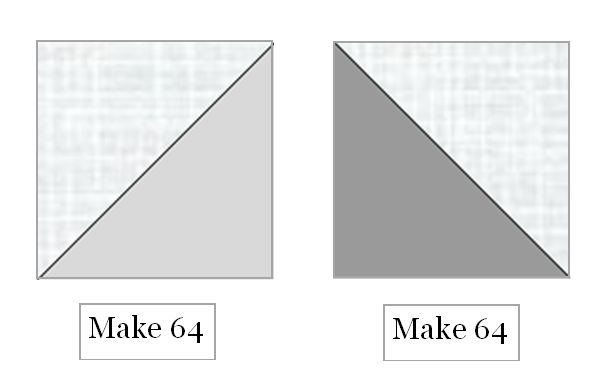
Piecing Ahead
Assemble:
(7) Outer Border strips 6-1/2″ wide by the Width of Fabric
(6) Inner Border strips 3-1/2″ wide by the Width of Fabric
(8) Binding strips 2-1/2″ wide by the Width of Fabric
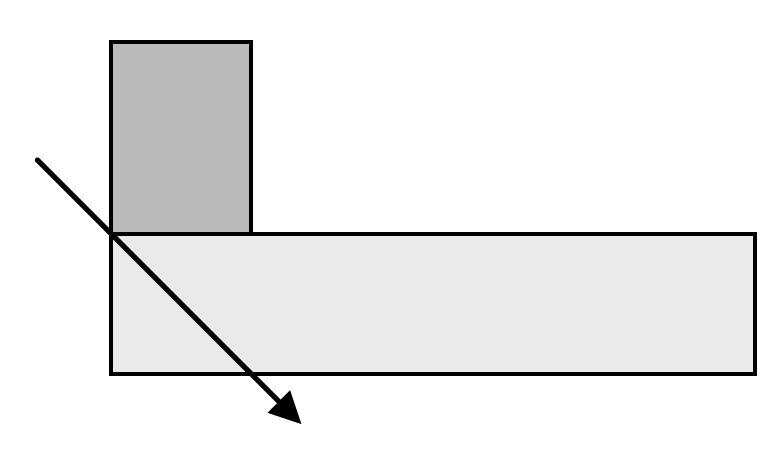
Working with each group individually, sew these strips end to end, mitering the joins if you prefer by sewing the two strips right sides together at an angle as shown to the left. Trim seams to 1/4″ and press open. Press the seam open.
Making the 16 Four Patch Blocks
Assemble:
- (32) 3-1/2″ light squares
- (32) 3-1/2″ medium squares.
Choosing your colors randomly, match a medium 3-1/2″ square with a light 3-1/2″ square. Make (32) Two-Patch blocks. Press to the medium.
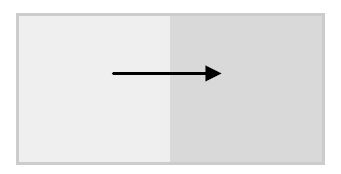
Sew these two-patch blocks in groups of two to make a four-patch block. Finger press the seams to the medium at the intersection. Make 16.
How to Twirl Block Seams
To avoid bulk at an intersection, twirl the seams on the back. Finger press them so they go around in a circle. You may need to pick out a couple of stitches at the intersection to get these twirled seams to lay flat.
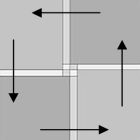
You know you have done it right if you see a tiny four-patch made by the right side of the fabric at the intersection. Now you can press the block and it will be absolutely flat. Square up to 6-1/2″ if necessary.
Making the 32 Pinwheels
Assemble:
- (64) Medium and Light HSTs
- (64) Dark and Light HSTs
Just as you did with the four-patch blocks, sew these HST blocks in groups of two with the dark HST
opposite of the medium HST.
Sew the two-patch HST blocks into a pinwheel, alternating the dark side of the triangle. You can twirl these seams to reduce bulk, too. Make 32 pinwheel blocks. Square up to 6-1/2″ if necessary.
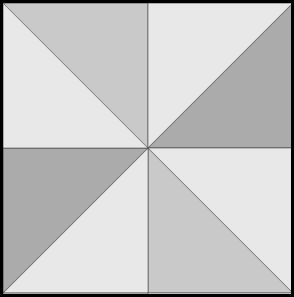
Remember, if you are making a controlled scrappy or a themed scrappy quilt, those dark HSTs should be in your chosen color or theme.
Making the Rows
Assemble
- (15) 6-1/2″ squares
- (32) 6-1/2″ Pinwheels
- (16) 6-1/2″ Four-Patches
Create 5 rows like the one below. These will be your odd rows: Rows 1, 3, 5, 7, and 9. Press all the block seams to the right.

Create 4 rows like the one below. These will be your even rows: Rows 2, 4, 6, and 8. Press all the block seams to the left.

Sew these rows in numerical order. Because of the way you have pressed your seams, they should just nestle at the intersection. Use pins to encourage this behavior. Press the entire top from the back when it is complete, checking to make sure there are no twisted seams. Your quilt top should measure 42-1/2″ x 54-1/2″.
Making the Quilt Top
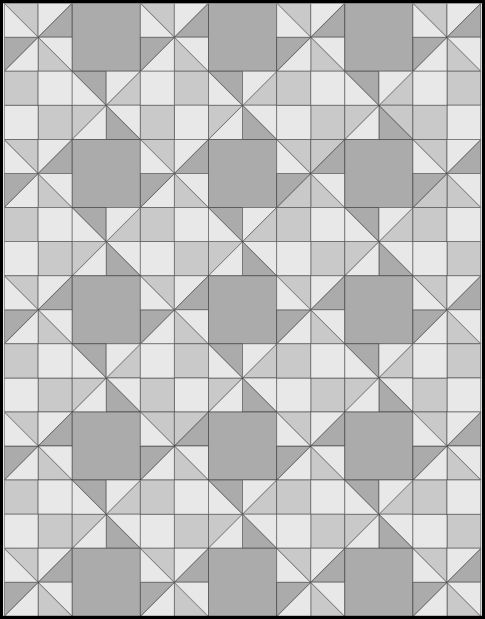
Adding the Borders
Assemble:
- the LONG inner border strip
- the LONG outer border strip
- a walking foot if you have one.
Step One: Cut (2) 3-1/2″ wide inner border strips 54-1/2″ long. Sew these to either side of the quilt top, taking care to match the center of the border with the center of the quilt top. Use a walking foot if you have one, or lots of pins if you don’t. Ease your border in place if necessary. Press to the border.
It’s always a temptation to simply sew on a strip and then cut off the excess but don’t do that here. There are too many seams that can change the size of your quilt. Forcing your quilt to match identically cut borders will force it to remain flat.
If one side of the quilt is just the tiniest bit larger than the border, place the quilt top down on the bed of your sewing machine when sewing the border on. The feed dogs will help take up the slack. Reverse the process if it is your border that is bigger.
Step Two: Cut (2) 3-1/2″ wide inner border strips 48-1/2″ long. Sew these to the top and bottom of the quilt top, taking care to match the center of the border with the center of the quilt top. Ease your border in place if necessary. Press to the border.
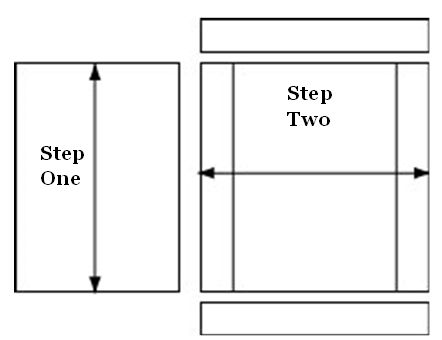
Cut (4) 6-1/2″ wide outer border strips 60-1/2″ long. Sew these to either side of the quilt top, taking care to match the center of the border with the center of the quilt top. Ease your border in place if necessary. Press to the border.
Sew the other (2) 60-1/2″ outer border strips to the top and bottom of the quilt top, taking care to match the center of the border with the center of the quilt top. Ease your border in place if necessary. Press to the border.
You are ALMOST done.
Pin your top to the wall for a couple of days in an obvious place so you can enjoy it and your family can praise you. Use this time to decide on a quilting design. Don’t forget to add a label.
A label will tell generations to come the story of this quilt: Who, What, When, Where, and Why. It will help identify the quilt should it become lost or stolen and will increase the value of the quilt at appraisal time
A quilt label can be as simple as a signature on the back or as elaborate as a heavily
decorated two-page story. If you only have time for a quick label, just sign and date the back of the quilt with an archival ink (acid-free) quality pen. Or you could embroider, cross-stitch or stamp your name and date on the front of the quilt as part of the design.
Now, quilt your quilt, add the label, and enjoy!

This mystery ended February 13, 2022. If you would like to see pictures of the quilts that people made, visit the PICTURE PAGE
Don’t forget to sign up for the newsletter! Once a week, I send updates on quilt-related information I have found while wandering the web. This might be an inspiring article, a tip or tutorial I have discovered (or written), and occasionally exclusive offers & discounts as well as immediate access to the secret page of free patterns, guides, and printables. You can follow my page on Facebook, or join the Make Believe Quilters group, too.

